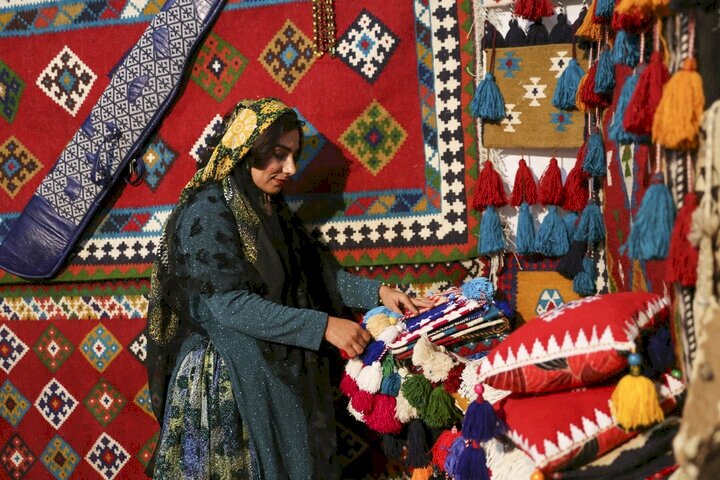200 people trained as crafters in Iranian province

TEHRAN - 200 people have recently been trained as crafters in the southwestern province of Kohgiluyeh and Boyer-Ahmad, the provincial tourism chief announced on Tuesday.
The courses included the fields of wood carving, weaving kilim, traditional costumes, and handmade bags, Heshmatollah Baqeri said.
The courses focused on promoting artistic indicators used to make indigenous and traditional handicrafts, the official added.
He also noted that gaining the National Seal of Excellence for recently revived fields of handicrafts in the region such as kilim-Mashteh (a kind of hand-woven kilim), jajim-bafi (a kind of hand-woven floor covering) is on the agenda of the county’s handicrafts department.
Kohgiluyeh and Boyer-Ahmad province is known for its nomads and nomadic life. Sightseers may live with a nomadic or rural family for a while or enjoy an independent stay and assist them with day-to-day life. It also opens up an opportunity to feel rustic routines, their agriculture, traditions, arts, and culture.
With 14 entries, Iran ranks first globally for the number of cities and villages registered by the World Crafts Council, as China with seven entries, Chile with four, and India with three ones come next.
In January 2020, the cities of Shiraz, Malayer, and Zanjan and the village of Qassemabad were designated by the WCC- Asia Pacific Region, putting Iran’s number of world crafts cities and villages from ten to 14.
The value of Iran’s handicrafts exports stood at $120 million during the first eleven months of the past Iranian calendar year 1399 (March 20, 2020 – February 18, 2021), Mehr reported. The country’s handicrafts exports slumped during the mentioned months in comparison to the same period last a year earlier due to the damage the coronavirus pandemic has inflicted on global trade.
The Islamic Republic exported $427 million worth of handicrafts during the first eleven months of the calendar year 1398. Of the figure, some $190 million was earned via suitcase trade (allowed for customs-free and tax-free transfer) through 20 provinces, according to data compiled by the Ministry of Cultural Heritage, Tourism and Handicrafts.
Ceramics, pottery vessels, handwoven cloths as well as personal ornamentations with precious and semi-precious gemstones are traditionally exported to Iraq, Afghanistan, Germany, the U.S., the UK, and other countries.
ABU/AFM
